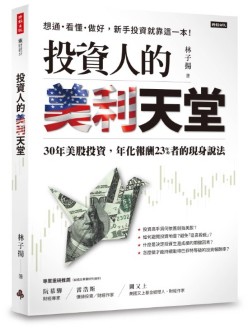For amateur investors, it might be surprised to them, vaguely right is better than precisely wrong.
Practically correct is more important than precise
In Buffett’s 1993 shareholder letter, Buffett wrote: “Academics, however, like to define investment “risk” differently, averring that it is the relative volatility of a stock or portfolio of stocks – that is, their volatility as compared to that of a large universe of stocks. Employing data bases and statistical skills, these academics compute with precision the “beta” of a stock – its relative volatility in the past – and then build arcane investment and capital-allocation theories around this calculation. In their hunger for a single statistic to measure risk, however, they forget a fundamental principle: It is better to be approximately right than precisely wrong.“
Simply Right is important than wrong
Warren Buffett saying quoted in The Warren Buffett Way by Robert G. Hagstrom, Wiley, November 4, 1994. Buffett admits, for the simple reason that calculating future capital expenditures often requires rough estimates “I would rather be vaguely right than precisely wrong.”
Buffett quoted the famous saying of the economist John Maynard Keynes “It is better to be roughly correct than to be precise.” To compare intrinsic value as an estimate value, it is really appropriate to use it here now.
Keynes believed that the accuracy of stock valuations was nothing more than a comforting device, perhaps an illusion intended to give a sense of certainty in an unpredictable world. Buffett actually has the same idea and opposes the use of false accuracy when estimating the intrinsic value of stocks. They all understand that doing so will not only over-emphasize the quantitative factors and underestimate the non-quantitative factors that may affect the stock price, but also because of the uncertainty, the valuation of any stock must not be very accurate, and will only fall within a possible range at most. In short, investors must incorporate errors into valuations.
Can be judged by common sense
During Berkshire Hathaway Annual Meeting 2007:
- Buffett (2007) said “If we see someone who weighs 300 or 320 pounds, it doesn’t matter — we know they’re fat. We look for fat businesses.”
- Charlie Munger (2007) pointed out “When you’re trying to determine intrinsic value and margin of safety, there’s no one easy method that can simply be mechanically applied by a computer that will make someone who pushes the buttons rich. You have to apply a lot of models. I don’t think you can become a great investor rapidly, no more than you can become a bone-tumor pathologist quickly.”
Fingers and toes investing
In 1996 Berkshire Hathaway annual meeting:
- Charlie Munger: “We have such a “fingers and toes” style around here. Warren often talks about these discounted cash flows, but I ’ ve never seen him do one . . .”
- Warren Buffett:That’s true. It’s sort of automatic. If you have to actually do it with pencil and paper, it ’ s too close to think about. It ought to just kind of scream at you that you ’ ve got this huge margin of safety.

Why?
Before clarifying the principles and general direction, or deciding on the wrong direction, doing things with a head cover desperately, no matter how serious it is, it’s in vain ─── “After all, things that are not worth doing, no matter how good they are, it’s useless. “. The basic thumb of rule of our life, everyone with basic common sense knows that when used in investment, there is no difference, or even more serious, because you may lose all your hard-earned money; it may be because of this. Cause your family bankruptcy and you will never be able to turn over.
Like Buffett said: “That which is not worth doing at all is not worth doing well.”
Related articles
- “What are the risks investors should face up to?“
- “I would rather be vaguely right than precisely wrong“
- “Risk vs Uncertainty“
- “Complicated math is not required in stock investing“
- “Investing has no formulas, but there are ways to invest successfully“
- “The uncertainty in investment“
- “Misunderstanding of price and value
Disclaimer
- The content of this site is the author’s personal opinions and is for reference only. I am not responsible for the correctness, opinions, and immediacy of the content and information of the article. Readers must make their own judgments.
- I shall not be liable for any damages or other legal liabilities for the direct or indirect losses caused by the readers’ direct or indirect reliance on and reference to the information on this site, or all the responsibilities arising therefrom, as a result of any investment behavior.
